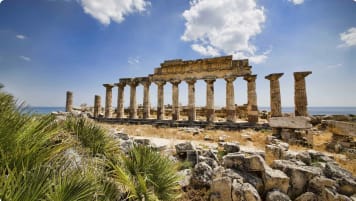History of a City: Florence, Italy
Florence or Firenze, article provides an overview of the history from inception from the Romans to Mussolini with plenty of the Renaissance covered. Includes a list of Museums and places to see in Tuscany. Background material for a small group package tour to Italy or long stay in Florence.
5 Jan 20 · 23 mins read

History of a City: Florence Italy
Florence Italy, is one of the most enduring tourist destinations in Europe, if not the world. For many people Florence Italy is a short stop in a world heritage city. Odyssey has put together a 21 night tour based in the city centre of Florence. Giving the inquisitive traveller the opportunity to live like a Florentine, enjoying the newly discovered secrets in the Florence old historic centre as a local in a self catering apartment, whilst studying and learning about the history of this city and the region of Tuscany. Odyssey’s small group long stay package tour in this historic old town is limited to 12 people and concentrates on learning about the Italian Renaissance period.
Called the “Athens” of the middle of ages, behind the city, central Florence was the centre of trade and finance creating one of the wealthiest cities of that era. This article for travellers traces the historical development of Florence old city on the Arno river, this is a unique Italian city, that seems to touch all who visit. Odyssey offers a collection of small group tours to Italy each year including walking tours.
History of a City: Florence
Archaeological evidence indicates that the area today that is the city of Florence was occupied prior to Roman settlement. Experts speculate that a village was founded by the Etruscans of nearby Fiesole approximately 200BC.
Florence was founded by Caesar: 59BC
However, it is generally accepted that the city of Florence was founded by Julius Caesar in 59BC. Conceivably, the location was strategic, given its proximity to the narrowest part of the Arno River. This position on the ancient road – the Via Flaminia – connected Rome, Northern Italy and France (Gaul). Florentia (roughly translated as “the flourishing town”) was laid out as a garrison, forming rectangular blocks. It was enclosed within an 1800 metre wall, and set about a central square – now the Piazza della Repubblica. Archaeological digs have uncovered traces of an amphitheatre and public baths. Thanks to its strategic position, Ancient Florence flourished. Furthermore, commercial activity and trade helped establish its young economy.

Byzantine and Lombard period: 5th to 6th century
But this centralised position also made Firenze (Florence) a contested target. The city was impaired by the Barbarian invasions and Gotho-Byzantine War during the 5th century. It fell to the Lombards, along with northern and central Italy, at the end of the 6th century. This is referred to as the region’s darkest period, wherein it was deemed too exposed to Byzantine incursions and so was cut off from major routes. For a time, the city essentially vanished. Nonetheless, many religious buildings were constructed during this period, including the Baptistry of San Giovanni. These early foundations are visible in the subterranean depths of the church in its current formation.
Carolingian Period for Florence: 8th to 10th century
It appears that Firenze was revived during this time. Evidence indicates that a destroyed bridge across the Arno was rebuilt, and more protective walls added to fortify the city’s borders. Firenze became a county of the Holy Roman Empire. Upon the death of the Marquis of Tuscany at the end of the 10th century, his widow, Countess Willa, commissioned a Benedictine abbey in his memory to be built in Florence. The Badia Fiorentina was one of the chief buildings in medieval Florence. Notably, Countess Willa’s son chose to live in this city on the banks of the Arno, as opposed to then capital Lucca. This is understood to be a crucial element of the city’s development as it reinforced Florence’s administrative significance.

Countess Matilda and the Early Middle Ages in Florence
The Early Middle Age period saw Florence increase further in political and cultural importance. The reform of the church took place during this time, eliminating secular interference from ecclesiastical matters. There was Papal independence from imperial power. Countess Matilda became the Countess of Tuscany following the death of her mother and husband. She supported the reformers, which placed her in conflict with Henry IV. His 1081 victory saw the Countess deposed and abandoned by all Tuscan cities, with the exception of Florence, where she was largely embraced.
In terms of infrastructure, more walls were added to Florence, and the city was divided into quarters during this period.
The Communes of Florence
By the time of Matilda’s death in 1115, Florence was effectively a Commune (a town council). Inspired by Matilda, the populace organised to weaken imperial power, which involved an attack on neighbouring Friesole following the death of Henry IV. Florence enjoyed a period of relative peace, and continued to expand in infrastructure. But the 13th century was plagued by feuds between the pro-papal Guelphs and pro-imperial Ghibellines. The Ghibelline nobles, in power in 1244, decided to broaden the social base of the government to gain approval from the merchant class. Just a few years later, these merchants and artisans were able to usurp the Ghibellines.

The Guelphs versus the Ghibellines
A new political power – the Guelphs – was established, with measures to prevent nobles from returning to positions of power. The city’s many towers were symbolically cut down to a height of 29 metres. Under this regime, Florence experienced another period of relative peace, before the battle of Montaperti in 1260 saw the city defeated by their Sienese hosts. All of the Guelph’s party’s political accomplishments were undone. The Ghibellines resumed power and restored the institutions. They also ordered the destruction of all buildings occupied by the Guelphs: hundreds of palaces, houses and towers were reduced to rubble. Opposing factions emerged, creating unrest, and the Ghibellines had to submit to the mediation of Clement IV, who favoured the Guelph faction. The Guelph’s re-established their power. But two other political groups had been developing at this time. The “Magnati” were made up of entrepreneurs, and the “Popolani”, of merchants and artisans.
The Ordinances of Justice adopted by Florence
By 1293, Florence adopted the Ordinances of Justice, barring the Magnati from political power, and ensuring the frequent rotation of members (every two months!) to avoid a single person gaining control of the state. So, the Commune mostly consisted of members of the merchant class. Florentines, then, became very politically minded, but the lack of continuity did cause some unrest. The late 13th century was also a time of great expansion. By the end of the century, Florence considered itself the main city of the West.

The popolo grasso and popolo minuto
By the 14th century, there developed a clear split between the popolo minuto – made up of the lower and middle classes, and the popolo grasso: the wealthy merchants. The latter held power, but the former made many attempts to moderate this, including the establishment of Guilds. Among the popoli grasso, two rival families had developed. They were known as the Neri (‘black’ – the richer society members) and the reformist Bianchi (‘white’). The pope favoured the Neri, and the heads of the Bianchi were arrested and exiled. Among them was poet Dante Alighieri. This was a particularly turbulent period of Florence’s history. Devastation was compounded by famine, the plague of 1348, and a major flood. Naturally, town development slowed. Interestingly, in the early 15th century, Florentines introduced the world’s first graduated income tax system: the catasto.
The Renaissance period & Florence
Power returned to the popolo grasso by the end of the 14th century. A restricted group of the merchant class ruled for around 40 years, headed by the Albizi family. But the excluded middle class opposed the oligarchy. They organised under Giovanni de’ Medici, a rich and powerful businessman, whose bank had become one of the most successful investment houses in Europe and so the Florentine renaissance period was born. Giovanni’s son, Cosimo, became the Lord of Florence. The Albizi family had him exiled, but underestimated the level of support for the Medici. Cosimo returned within the year, and the Albizi were expelled.
But the early renaissance was not all about the Medici. Women also had an important contribution to the renaissance as well the powerful families such as Mantua and Gonzaga the Ferrara and the Este and the Urbino and the Montefeltro in the way in which the Renaissance period played out. Of course so did Carravaggio as a painter who found support from Medici family.
–> Funny fact:
The Medici family crest consisted of six palle, or balls. They each represented a coin, in reference to the family’s wealth and banking pedigree. Supporters would roam the streets shouting “Balls! Balls! Balls!”

Cosimo de’ Medici
Cosimo de Medici gained favour by patronage, as well as alliance to the gente nuovo – new immigrants to Florence. Famously, the Medici were also bankers for the pope. Cosimo tended to occupy the background in politics, while making sure that the government was made up of his affiliates and supporters. Meanwhile, the Gothic style had been replaced by the Renaissance. Brunelleschi added the stunning Duomo to the Cattedrale di Santa Maria in Florence. After this, Cosimo employed many famous artists who where influential in the renaissance art period.
Lorenzo the Magnificent in Florence
A rare period of peace, along with great artistic development, ensued until Cosimo’s death in 1464. Cosimo was succeeded by his son, Piero, followed by grandson Lorenzo de Medici. Rival family the Pazzis emerged, and plotted to assassinate Lorenzo. Though his brother was killed during mass at the Cattedrale di Santa Maria, Lorenzo escaped wounded. The Pazzi were dealt with by the Medici family‘s many followers.

Medici lion by Vacca (1598) in Loggia dei Lanzi at Signoria square, Florence
Lorenzo de Medici, too, was a great patron of the arts. He commissioned works by Botticelli, Leonardo da Vinci, and Michelangelo – the latter having lived with the family for a time as a young man. But the Medici bank was in decline. Lorenzo de Medici was succeeded by his unpopular son, Piero, and a period of chaos ensued in this Italian city .
Piero the Unfortunate
Piero disgraced his family and followers by submitting to the French army of Charles VII. The republican regime was reinstated. Subsequently, the majority of citizens fell under the teachings of Girolamo Savonarola. This bombastic Dominican friar condemned the luxuries of his predecessors. He persuaded his susceptible audience of the horrors that would await them should they continue to consume, drink, gamble, and engage in other unsavoury activities. Books and clothing were among the items burned in the “bonfires of the vanities”, as Savonarola influenced government on the basis of his divine interventions.
The heretic, Girolamo Savonarola
Pop Alexander VI was unimpressed with the accusations of debauchery and corruption levelled at the Church. Savonarola was ordered to go to Rome. Compounded by bad harvests and growing unrest, particularly among the rival Fransiscans, the signoria began to worry. People were rioting in the streets, and Savonarola was challenged to an ordeal by fire. He declined, sending a deputy in his place, but as the trial was washed out and further riots took place, the signoria finally arrested Savonarola. He was deemed a heretic and hanged and burned at the stake. The statue of David was created by Michelangelo as a guardian to Florentine freedom.

The return of the Medici
The Medici family returned to Florence, with support from the papal and Spanish armies. Giovanni – the second son of Lorenzo the Magnificent – was elected Pope Leo X a year later. While the golden period of the Medici seemed to have finished, they continued to rule effectually enough. A series of Medici men held power throughout the 16th century, restoring the family’s patronage of the arts and managing to keep a struggling economy in operation. However, the small territory could not compete with powerful centralised states, and trade and manufacturing were declining.
While Cosimo de Medici was officially the Duke of Florence, he and his wife, Catherine de Medici undertook building programs that saw the construction of the Uffizi, and the renovations of the Palazzo Vecchio and Pitti Palace. But by the extended reign of Cosimo III (1670-1723) and the death of his son Gian Gastone (in 1737), the city was in a state of decline. Prior to his death, the unpopular Gian Gastone bestowed Tuscany to Francis Stephen of Lorraine, rather than to his own closest relative.

The Austrian empire takes a turn at ruling Florence
Francis I became Duke of Lorraine, of the French-Austrian dynasty, in 1729. Tuscany was now a territory of Austria. But beforehand, in the final significant act of the Medici dynasty, Anna Maria Medici bequeathed all the family’s art and property to the Grand duchy of Tuscany, specifying that they must never leave Florence. The Uffizi now holds one the most significant collections of art in the world, which can be enjoyed by the public.
Maria Theresa, wife of Francis I was the Hapsburg heiress. In order to marry her, he had to relinquish his rights to Lorraine. The couple lived briefly in Tuscany, but were based in Vienna. After the death of Francis I, his son, Joseph II, ruled as Holy Roman Emperor. This left Tuscany to be passed to second son, Leopold.
The Grand Duke of Tuscany
Leopold was Grand Duke of Tuscany from 1765 to 1790. Though reputedly unpopular (and infamous for his many love affairs), he restored the economy, reforming taxation and social systems. Smallpox vaccination was made available; institutions for juvenile delinquents and the mentally ill established, and capital punishment was abolished. He also attempted, without success, to secularise the property of the clergy and place the Catholic institution under government control. In fact, Leopold’s politics were so progressive that he attracted opposition even from those that would have benefited from his proposals.

The dissolution of the Grand Duchy
Leopold was succeeded in 1790 by Ferdinand III, son of the incumbent Grand Duke. But at the turn of the 19th century, the Grand Duchy dissolved. In the fallout of the French Revolution and Treaty of Aranjuez, it was replaced by the Kingdom of Etruria. After less than a decade, it was annexed by France, and subject to negotiations between France and Spain. Tuscany was divided into departments. A Government of these departments was established, headed by Elisa Bonaparte, sister of Napoleon. She was given the title Grand Duchess of Tuscany.
Collapse of Napoleon
By 1814, the Napoleonic system collapsed. Tuscany was restored and Ferdinand III resumed rule until his death in 1824. While Ferdinand aligned Tuscany with Austria, Italian nationalism was flourishing, and secret societies in development. The desire for a united Italy was taking hold. Ferdinand III was succeeded by his son, Leopold II. Leopold was unpopular, despite his merits. He was dismissed as a foreigner. It was during his reign that the Revolutions of 1848 took place. The throne of France was toppled, and Europe sent into disarray.
Leopold made attempts to achieve calm, instituting a liberal constitution that attracted intellectuals, artists and musicians to the city. But adding to the unrest, the Austro-Sardinian Wars drew Leopold’s attentions into supporting Austria. Tuscany was taken by Victor Emmanuel II of Sardinia, and Leopold fled. Eventually, he was permitted to return, and on his arrival, he abdicated to his son Ferdinand IV.

A united Italy & Florence
The House of Hapsburg-Lorraine was deposed in 1859, following two bloody battles by a combined French and Piedmontese army. Under the rule of new Italian King, Victor Emmanuel, The Grand Duchy gave way to the United Provinces of Central Italy. These included the Duchies of Modena and Parma. The United Provinces were annexed to the Kingdom of Sardinia (or alternately called the Kingdom of Piedmont). Florence served as capital from 1865 to 1870.
This saw a period of extensive urban development. Consequently, much of Florence as we currently experience it originated at this time. Ring roads were laid and squares were constructed. Suburbs developed in the north and north-west. Italy was unified in 1870, and Rome made its capital. But Florence continued to flourish once again in its infrastructure, even though residents continued to live in poverty into the 20th century.
The World Wars
At first, the impact of World War I was not obvious in Florence. Its location far from the war-front shielded it for a time. But the devastation was soon felt as the drastic loss of lives. By 1917, resources were strictly rationed and Florentines suffered a particularly cold winter without heating fuel. Post-war, plans were made to establish a factory zone. Workers groups developed, and the political left began to clash with the right.
In 1920, Florence became one of the biggest strongholds of Mussolini’s Fascists. And by 1922, these Fascists took control of Florence. The “Blackshirts” – named for their black uniform – used brute force, even torture, to maintain their hold. As a result, the opposition were pushed into hiding; meanwhile Mussolini rewarded the region for its loyalty by building a new stadium (1932) and train station (1933-5). In 1938, Hitler came to Florence. Mussolini joined his European tour in 1938.

Mussolini and the German “Blackshirts”
Florentines were left to fortify the city’s borders in the onset of Allied bomb attacks. Thousands of pieces of art were transported out of Florence, and other precious pieces, including Michelangelo’s David, were encased in shelters or bunkers. Approximately 500 people died between 1943 and 1944.
Italy surrendered in 1943. But the Allies were located south of Naples – too far to defend them from Hitler’s Schutzstaffel (SS), who tortured people at the north of the city. Once the Allied forces arrived in 1944, the German forces began blowing up the city’s bridges. With assistance from the Italian Resistance fighters, Allied forces were able to clear Florence of the violent German soldiers over a period of two weeks. Finally, the war was over by 1945.
The wake of World War II
But in its wake was the massive destruction that needed to be repaired. Bridges were rebuilt, and several of the city’s monuments painstakingly restored. The most controversial leader of this ensuing period was Sicilian-born Giorgio La Pira, who was elected mayor in 1950. At this time, there was a strong Communist and left-wing presence in the city. La Pira, on the other hand, was right-wing and religious, inspired to govern for the poor.
Among his gestures were re purposing empty buildings for housing, providing bread for the poor and supporting the rights of factory workers. Notably, he was not quiet in doing so – he participated in conferences and peace efforts worldwide. Controversially in the Cold War era, he made several trips to the East, including China and Russia to advocate for peace. La Pira was mayor until 1956, before serving a second period between 1960 and 1964.

The major flood of 1966
Another significant event that took place in the twentieth century was the 1966 flood. Florence’s cultural heritage was grievously harmed as the Arno broke its banks, sending dirty water coursing through its streets. Debris, mud and oil were deposited on buildings and property. As the water rose up to 20 feet, priceless sculptures, paintings and manuscripts held in city libraries were submerged. Experts from across the world rushed to assist in trying to save these sodden treasures. And major public works were undertaken to ensure the event would not be repeated. So far, mercifully, it has not.
Contemporary Florence
Since the mid-20th century, Florence has been largely governed by centre-left administrations. The influence of the Catholic Church has been maintained. The Communist Party also persists, under the new entity of the Democrats of the Left.
During the 1980s and 90s, a large influx of tourism did threaten the cultural heritage of the city, as some of its artisanal practices declined. Additionally, pollution from vehicles increased drastically. These issues were somewhat abated by the closure of parts of the city of Florence to private cars, but it is important for Florence to maintain its own customs and traditions in the face of global changes. This “museum-city” values its past very highly.

Highlights of Florence
Cattedrale di Santa Maria del Fiore
Saint Mary’s Cathedral, Florence Cathedral, or simply ‘Duomo’ as it is alternately called, is the main church of Florence. It was begun in the Gothic style in 1296 by Arnolfo di Campio. It was structurally completed in 1436 by Filippo Brunelleschi. The complex includes the Baptistery of Saint John, a Romaneque, 11th-12th century building with impressive bronze walls and a mosaic covered dome. There is also Giotto’s Campanile, a slender, freestanding bell tower that is richly sculptural. The three buildings are preserved as a UNESCO world Heritage site and are perhaps Florence’s most popular tourist attraction.
What to do in Florence
Read on for ideas for things to do on your trip to Florence. There is something for everyone, from art and nature-lovers, to foodies, to those passionate about history, architecture and archaeology.
History of the Medici: Top 4
1. The Equestrian Monument of Cosimo I, in the Piazza della Signora
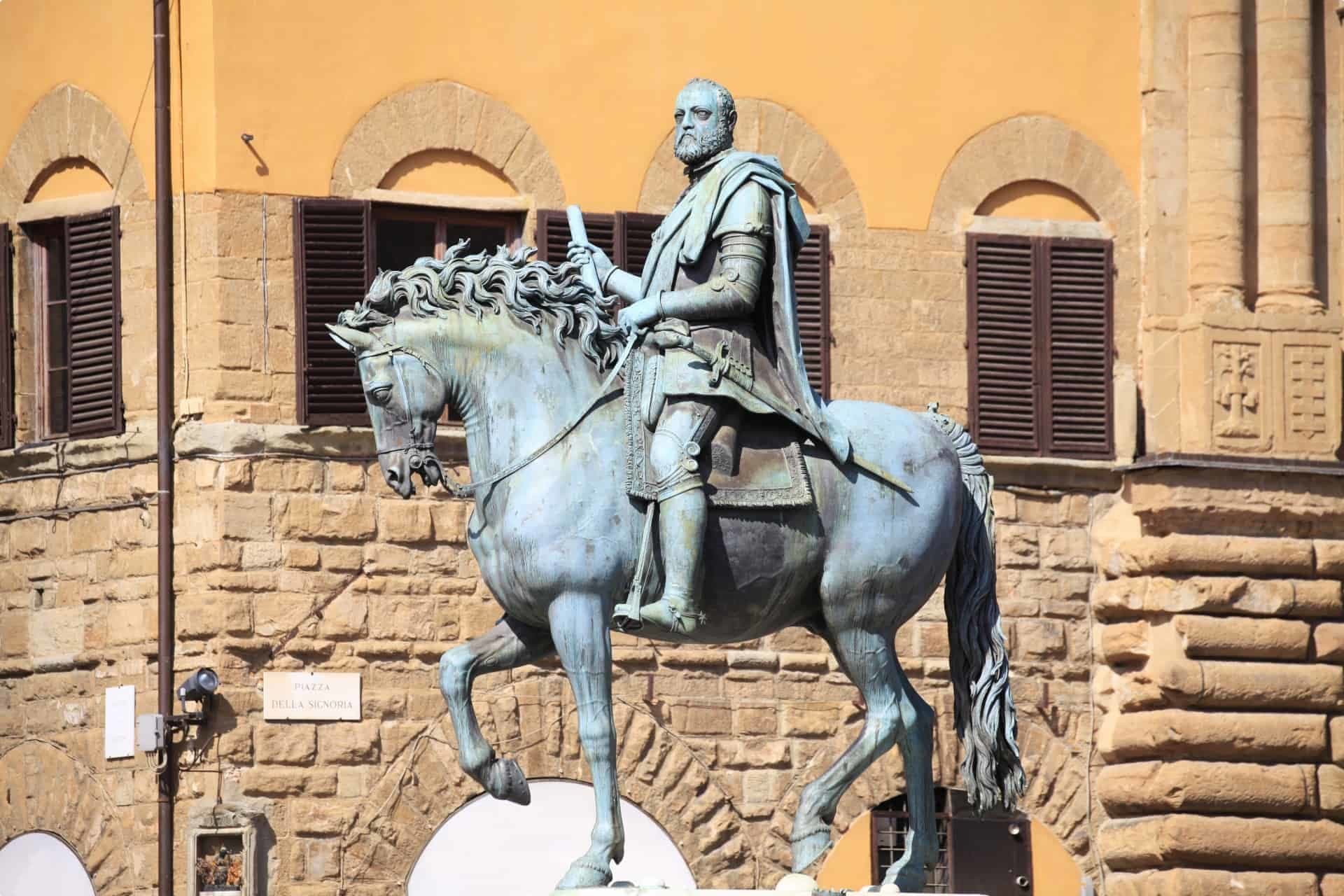
The bourgeois Medici family ruled Florence for the most part of 1434 to 1737. This equestrian statue depicts Cosimo de Medici. The authoritarian ruler is perhaps best known for the creation of the Uffizi (or offices) which now house a large collection of art commissioned or owned by the Medici family. The statue of Cosimo I was created by the sculptor Giambologna and stands within the Piazza della Signora.
Interestingly, this square is actually L-shaped, and leads to the 14th Palazzo Vecchio or Town Hall, Uffizi, and other key buildings in Florence. There is a copy of Michelangelo’s David at the entrance of the Palazzo Vecchio. The original sculpture is housed in the Gallery of the Academy of Fine Arts (or Galleria dell’Accademia)
2. Palazzo Medici Riccardi
This was the first palace of the Medici. The impressive building, commissioned by Cosimo I, is said to convey the Renaissance spirit of rationality, order and classicism. It was designed by Michelozzo di Bartolomeo, and building commenced in 1444. Michelozzo was influenced by classical Roman and Brunelleschian principles. The building’s tripartite structure is emphasised by its division into three stories that transition from rustic stone masonry all the way up to refined stonework. The building was completed in 1484.
–> Interesting fact
A dinner between Mussolini and Hitler took place at the Palazzo Medici Riccardi in 1938
3. Basilica of San Lorenzo
The Medici Chapels are considered the official church of the Medici family. Accordingly, the Basilica of San Lorenzo is the burial place of all principal members of the Medici family.
4. Palazzo Pitti and Boboli Garden
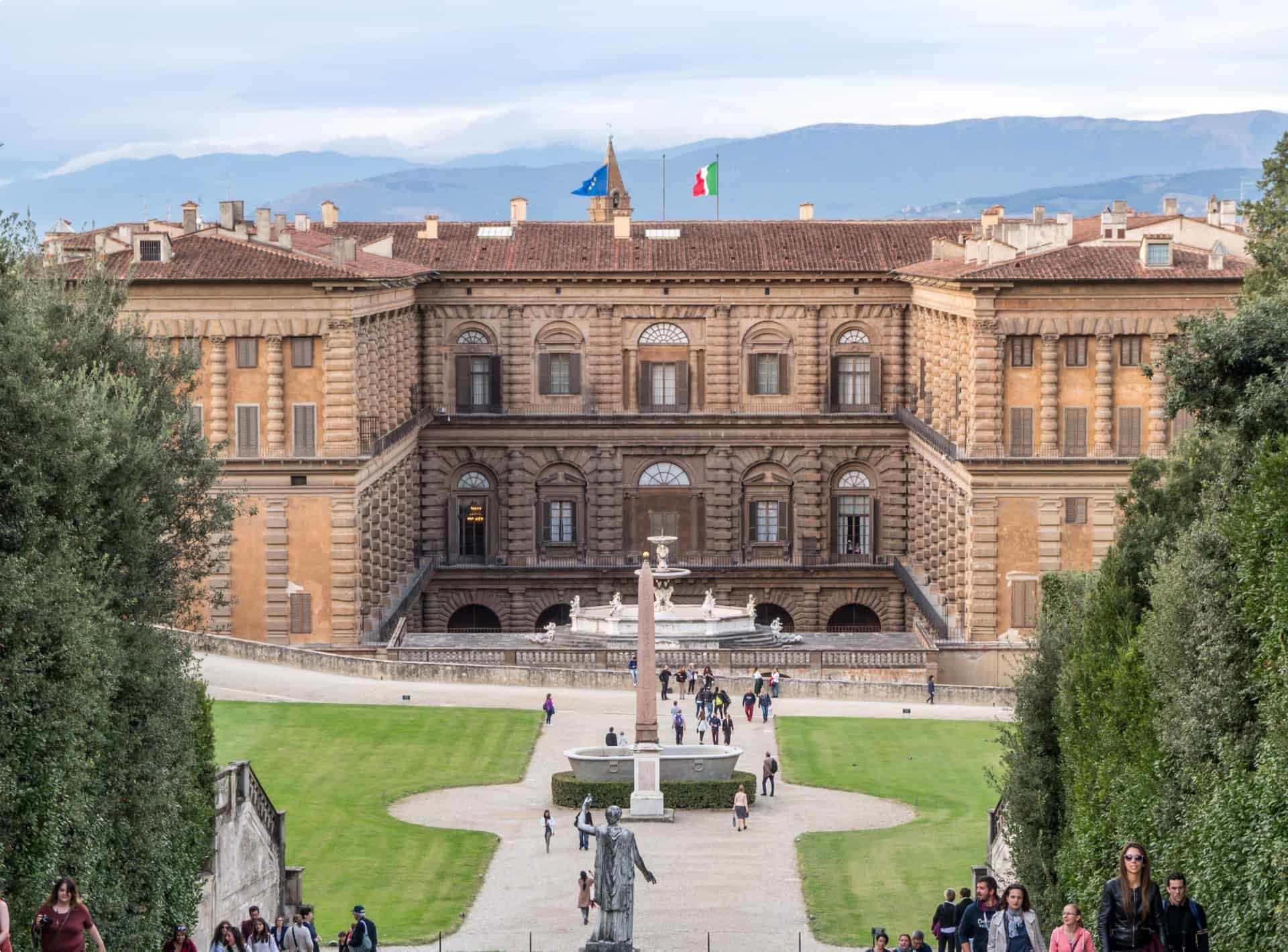
This impressive palace is one of Florence’s largest architectural monuments. On the first floor of the Palazzo Pitti is the Palatine Gallery, with its 16th and 17th paintings, including works by Raphael. On the ground floor is the Treasure of the Grand Dukes, featuring a collection of Medici household treasures.
Just past the Palazzo is the Boboli Garden – a stunning open-air musuem. Centuries old oak-trees and fountains dot these grounds, along with impressive sculptures. Wander through the picturesque ampitheatre while you’re here.
Best Museums and Galleries in Florence
Uffizi
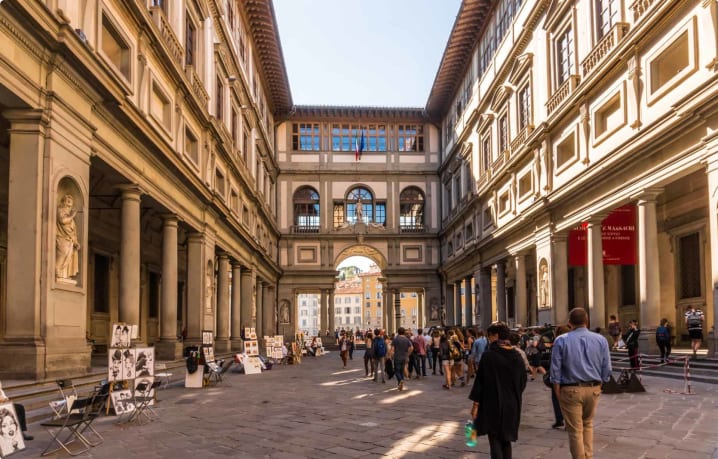
Few people know that this huge building was originally commissioned by Cosimo I de’ Medici to house administrative offices. Accordingly, Uffizi translates to “offices”. Georgio Vasari was called upon to design the u-shaped building. He included a secret corridor that leads to the Pitti Palace and Boboli Garden. The Medici family were great patrons of the arts. So, the collection was enriched by every member of the dynasty until they died out in the 18th century.
A Family Pact, signed by Anna Maria Luisa de’ Medici (the last of the dynasty), ensured that all treasures would remain in Florence. Most of the collection was bequeathed to the Tuscan state upon her death, and the Uffizi gallery was made a public space.
Some of the masterpieces contained in the gallery are priceless. They include the Ognissanti Madonna by Giotto (1310), Botticelli’s The Birth of Venus (1482-5), plus stunning pieces by Raphael, Michelangelo, Titian and Caravaggio.Learning about Caravaggio’s Paintings: The Definitive Guide for Seniors
Barghello Museum
The Barghello Museum is a former barracks and prison which now houses a remarkable collection of Renaissance sculpture and art.
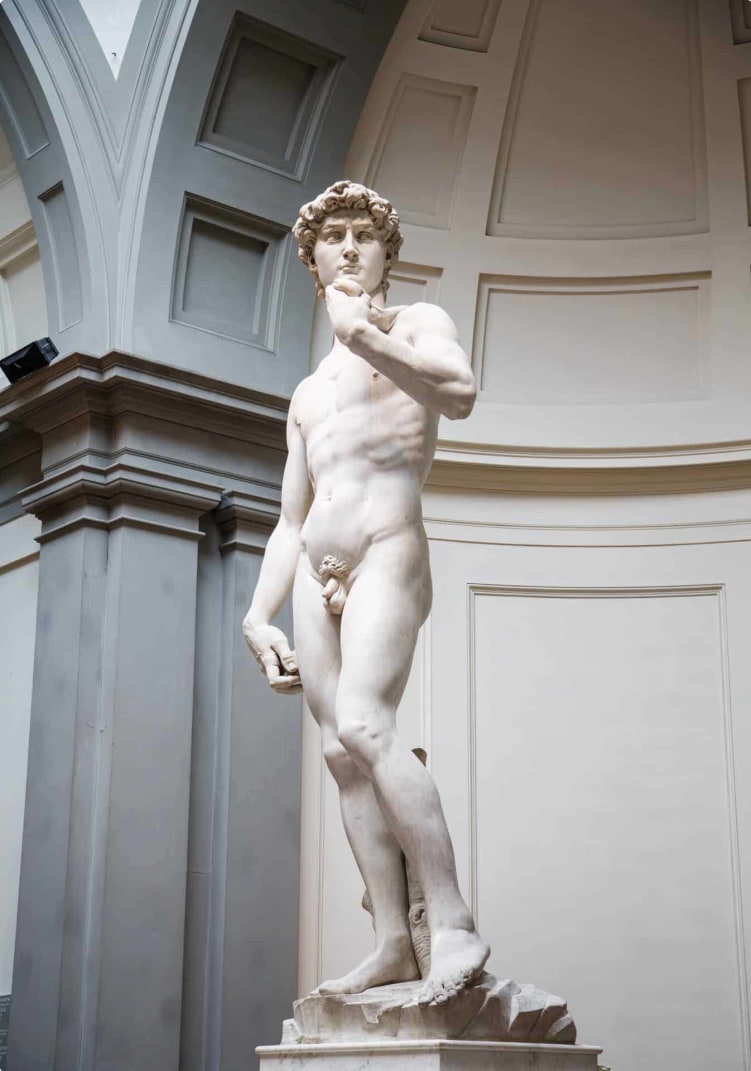
Galleria dell’Accademia (Accademia gallery)
This is home to Michelangelo’s David. The marble statue stands 5.17 metres (17 feet) tall. It depicts the biblical hero David, who defeated Goliath. Michelangelo has posed David differently to other depictions. Other artists including Donatello have positioned David over the head of Goliath. Many scholars interpret Michelangelo’s David as captured before battle, in a tense moment of anticipation. The contrapposto, or positioning of David as twisting and placing more weight on one foot, contributes to the dynamism of the pose. It is though he is captured in motion.
–> Interesting Fact
The height of Michelangelo’s David was incorrectly recorded, and then replicated throughout many publications. A team from Stanford University correctly determined the height as late as 1998. They used digital imaging to learn that it was actually taller than previously thought. Furthermore, though the size of the statue inspired Michelangelo’s contemporaries, it is much more diminutive than other famous statues. Notably, the Statue of Liberty towers over David at 93 metres, and Christ the Redeemer is almost six times its height.
Luigi Cherubini Music Conservatory and Musical Instruments Collection
At the Gallery of the Academy of Fine Art, we can also visit the Luigi Cherubini Music Conservatory and Musical Instruments Collection. Three very significant musical instruments are conserved here: a 1716, Stradivari violin and two instruments that once belonged to the Medicean Quintet. Notably, you will also learn here that the piano was invented in Florence!
Museo Novocento
This museum is dedicated to artworks produced in the twentieth century. Around 300 impressive works are housed here, displayed in various exhibitions.
Museo di San Marco
This complex is made up of a church and convent. Architect Michelozzo assisted Cosimo I to restore it, and it was consecrated in 1433. This museum is worth visiting for its stunning architecture alone, but also boasts Fran’ Angelico’s frescoes and panels.
Museo degli Innocenti
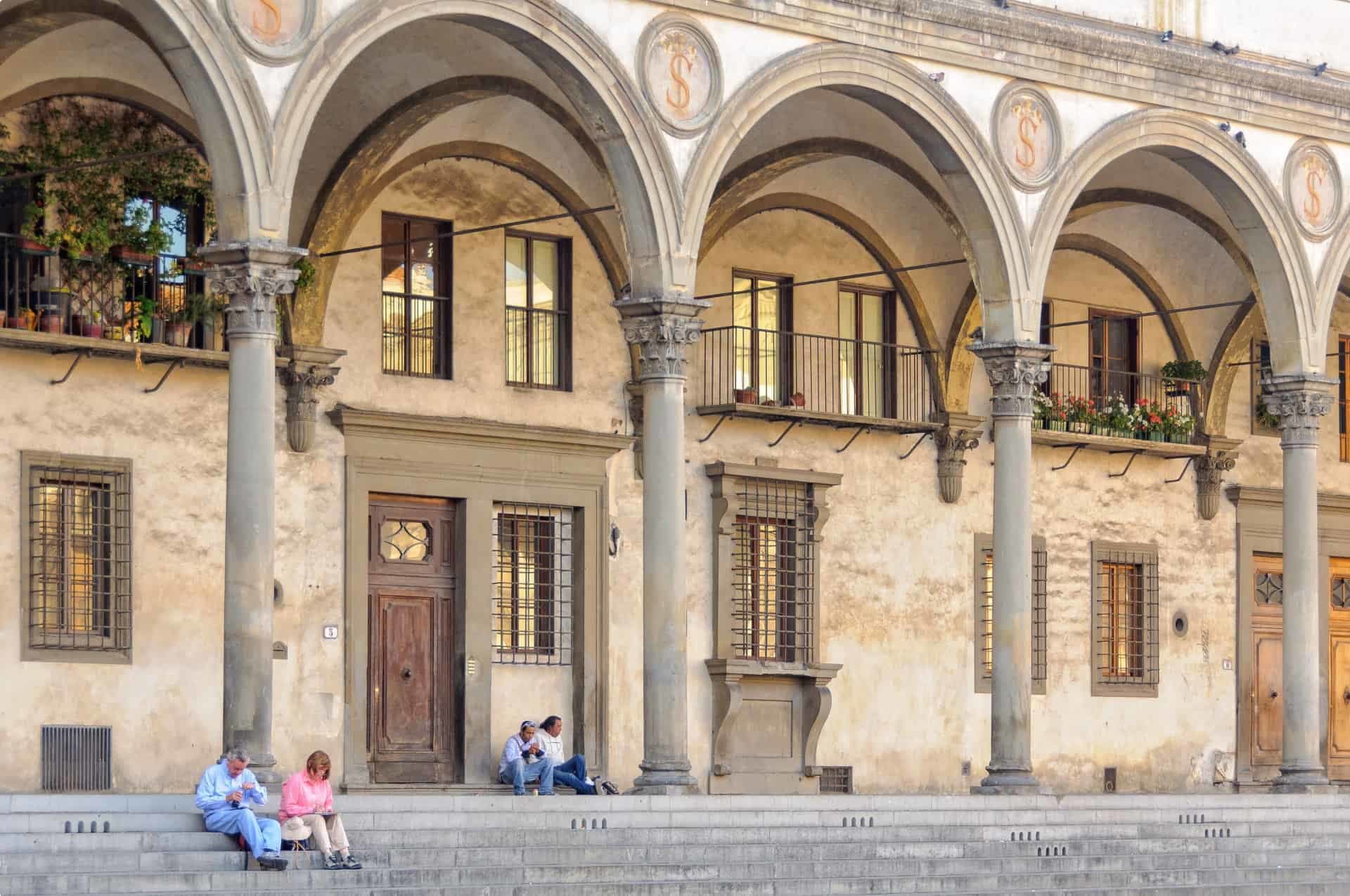
Six centuries of history are contained within these walls. The Museum is housed within the Institute for the Innocent – a charitable public institution that originated in the 14th century. It was devoted to the hospitality, care and education of children. Once known as an orphanage for children who were often left there anonymously, it now provides services for children and pregnant mothers. UNICEF’s Research Centre is also located here. It’s a fascinating part of Florence’s history.
Dante House Museum
This is located at Dante Alighieri’s birthplace. Born in Florence in 1265, this Italian poet wrote in the Late Middle Ages. His Divine Comedy is considered one of the greatest works of the Italian language. However, Dante was exiled from Florence during the Guelph-Ghibelline conflict. Dante was affiliated with the reformist Bianchi chapter of the popolo grasso, and was removed to Rome by the Pope. Eventually, Florence came to regret this action. They have made several attempts to acquire his remains, but have been refused. As a result, a sarcophagus in his honour at the Basilica of Santa Croce remains empty.
Salvatore Ferragamo Museum
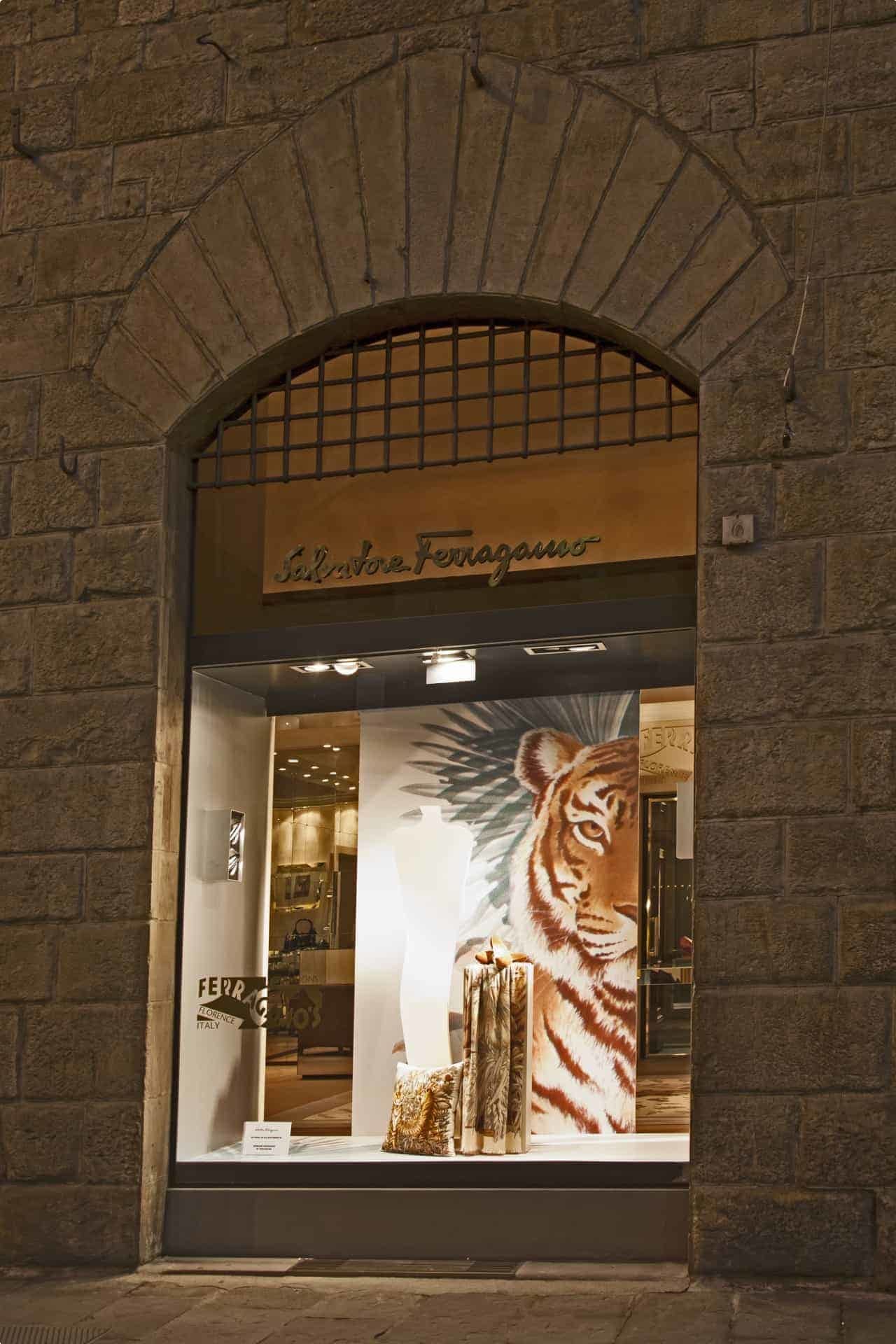
This was opened by the family of the shoe and fashion designer’s family in 1995. Born in Bonito near Naples in 1898, Ferragamo’s passion for shoes was evident from his childhood. He opened a small store in his parent’s home. Then, he spent time in Boston and California, where he really began to achieve success. But it was on his return to Florence in 1927 that Ferragamo came to design shoes for some of the wealthiest and most powerful women of the twentieth century. The Museum is housed in his former headquarters and workshop.
If you would like to learn more about Florence’s impressive museums and galleries, a helpful guide can be found here
Two impressive Basilicas
Basilica di Santa Maria Novella
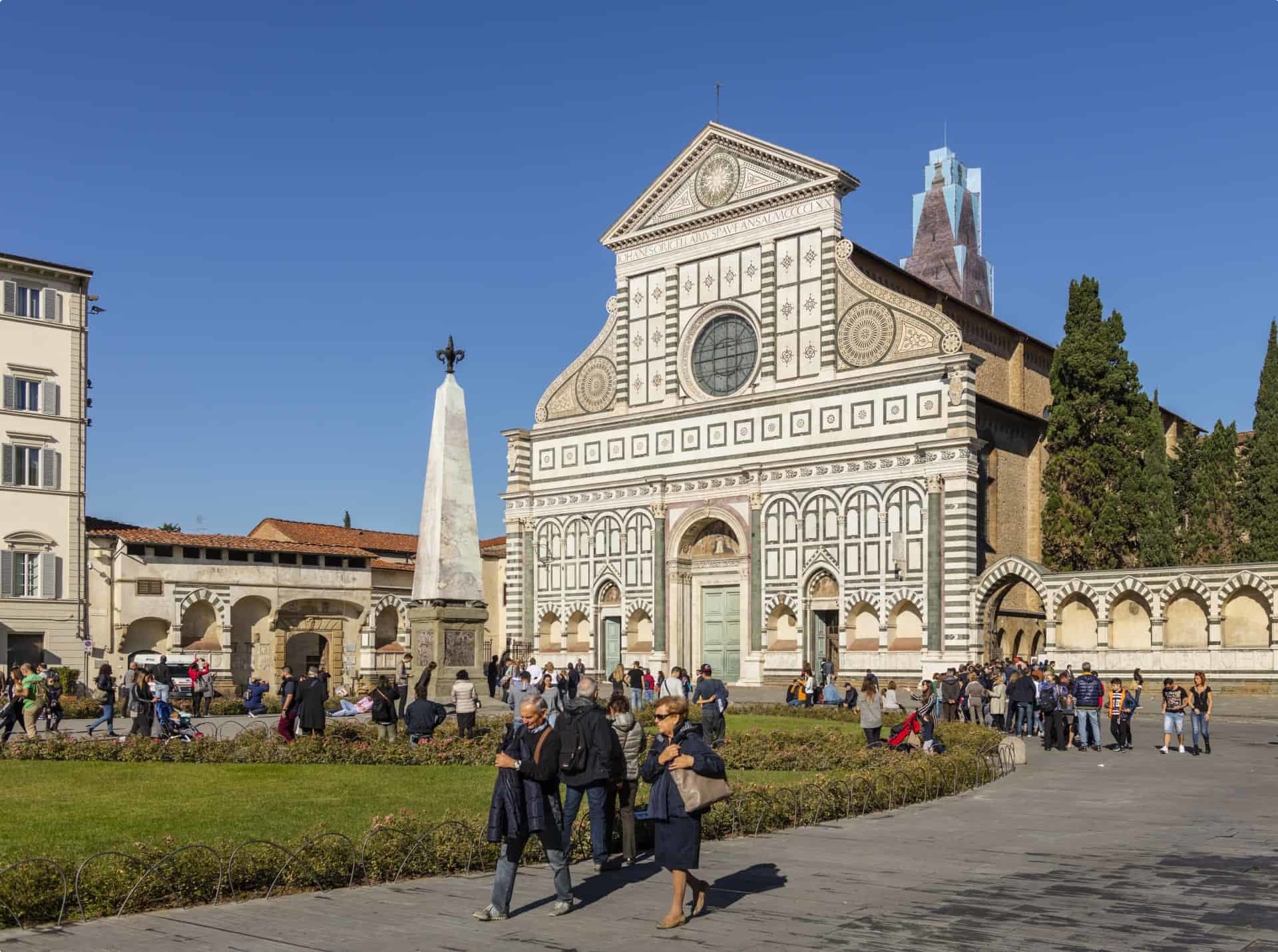
This is the city’s principal Dominican church, and, chronologically, the first great basilica in Florence. Building began around 1246. The Gothic featured church was completed in 1360, and consecrated in 1420. Following this, various wealthy families commissioned additional chapels, along with frescoes by respected artists. In 1567, Cosimo I ordered the first remodel of the church, undertaken by architect Vasari. Different touches have been added to this church throughout history. It is the burial place of several notable Florentine figures.
Basilica di Santa Croce
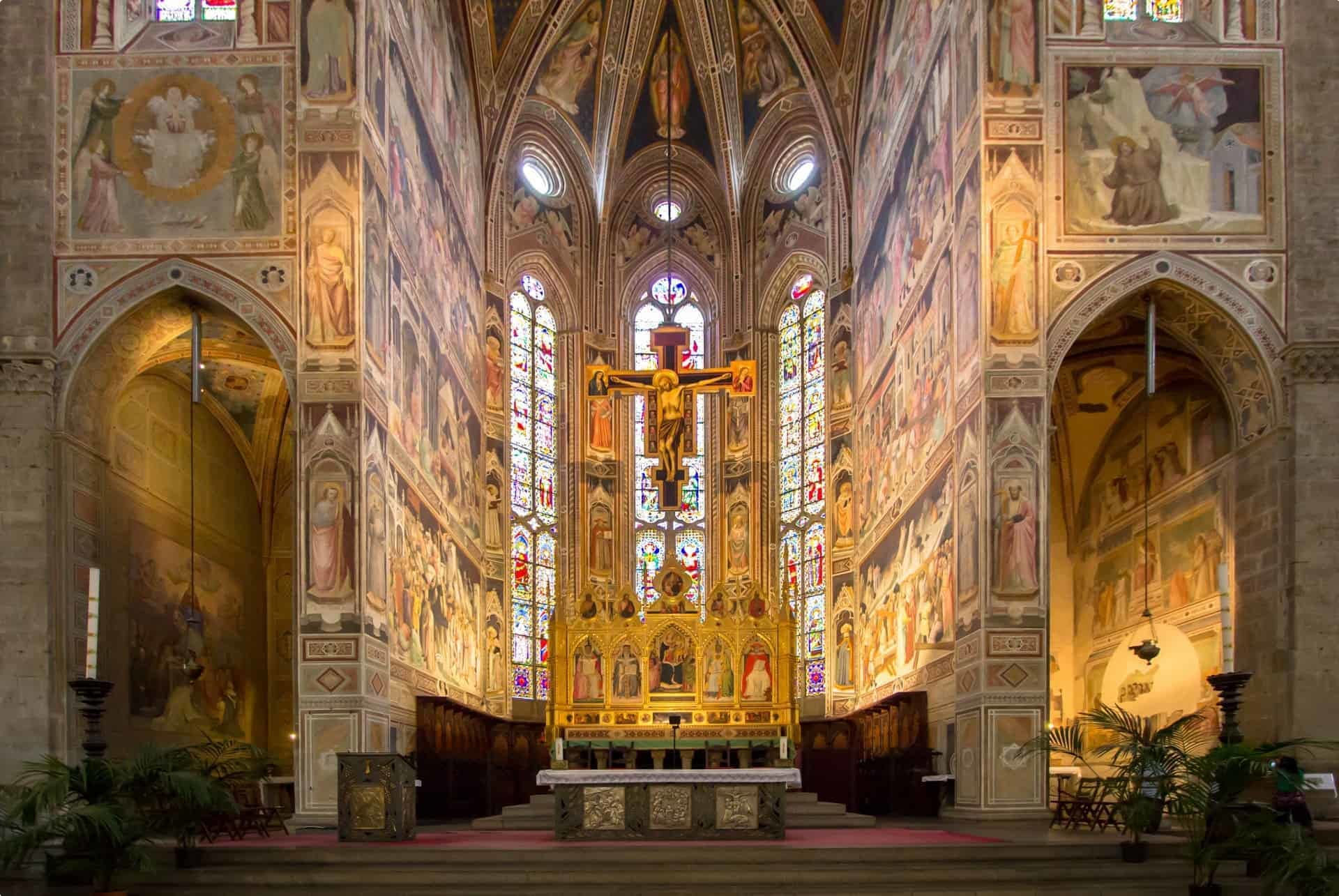
Florence’s principal Franciscan church. It was built in 1294 by Arnolfo di Cambrio, and is the burial place of many key figures in Florentine history. This includes Michelango, Machiavelli and Galileo Galilei. A memorial to Dante is also housed here, though because of his exile from Florence, the sarcophagus is empty. Sixteen chapels compose the Basilica di Santa Croce.
Views of Florence
Piazzale Michelangelo
This monument on a hill offers breathtaking, panoramic views of the city. It is perched at the south side of the Arno river. Interestingly, this monument is not as old as it is often taken to be. While the piazza is dedicated to Michelangelo, and features another replica, in bronze, of David, it was actually created in 1869.
The Rose Garden

Florence’s Rose Garden offers equally impressive views of this beautiful city. Over 350 varieties are planted here, which bloom during May and June. However, any time of year is ideal to wander through this garden, which offers a quiet respite from the bustling museums and galleries of Florence.
Abbey of San Miniato al Monte
This basilica stands atop one of the highest points of Florence. St. Miniato or Minas was an Armenian prince. He served in the Roman army, but after becoming a hermit, was denounced as a Christian. Subsequently, Emperor Decius captured him and ordered him to be thrown to beasts in the Amphitheatre, but the beasts refused to harm him. So, he was beheaded. It is said that he picked up his head, crossed the Arno river and walked to the hill where he had lived as a hermit. The spot was made into a shrine, and a chapel was built in the 8th century. By the 11th century, the current church was begun. Eventually, it was passed to the Olivetans, and continues to serve as a monastery where they produce honey, liqueurs and herbal teas for sale to the public.
Fiesole
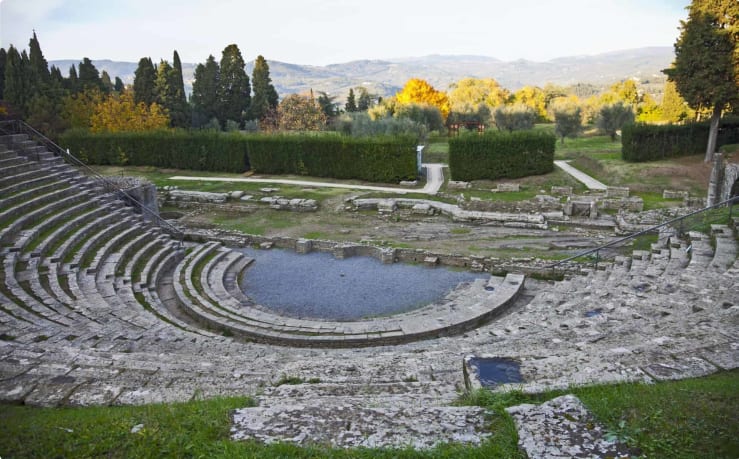
Fiesole is tucked away in the hills to the north of Florence. An intact amphitheatre is among the ancient ruins preserved here. So, for those with a keen interest in archaeology, Friesole makes a great day trip from Florence. But it will also attract medieval art lovers to the Bandini Museum. And history buffs will be interested to explore the Villa Medici – built for the Medici family between 1451 and 1457. Those attracted to natural beauty will appreciate that the villa is set in beautiful gardens, which are arranged into three verdant terraces.
The Tuscany region: around Florence
Tuscany is a popular region with travellers. The Tuscan countryside is beautiful and a historic center such as Siena dominates. Though there is more still to see and explore and learn about.
San Gimignano
While travelling in Florence, take a day trip to this charming Tuscan hill town. Located in the province of Siena, this small, walled village impresses with its medieval architecture and well-preserved tower houses. It was granted UNESCO World Heritage status in 1990. Additionally, the Collegiate Church is a minor basilica located at the heart of the village. Its Romanesque architecture dates to the 12th and 13th centuries.
Chianti region
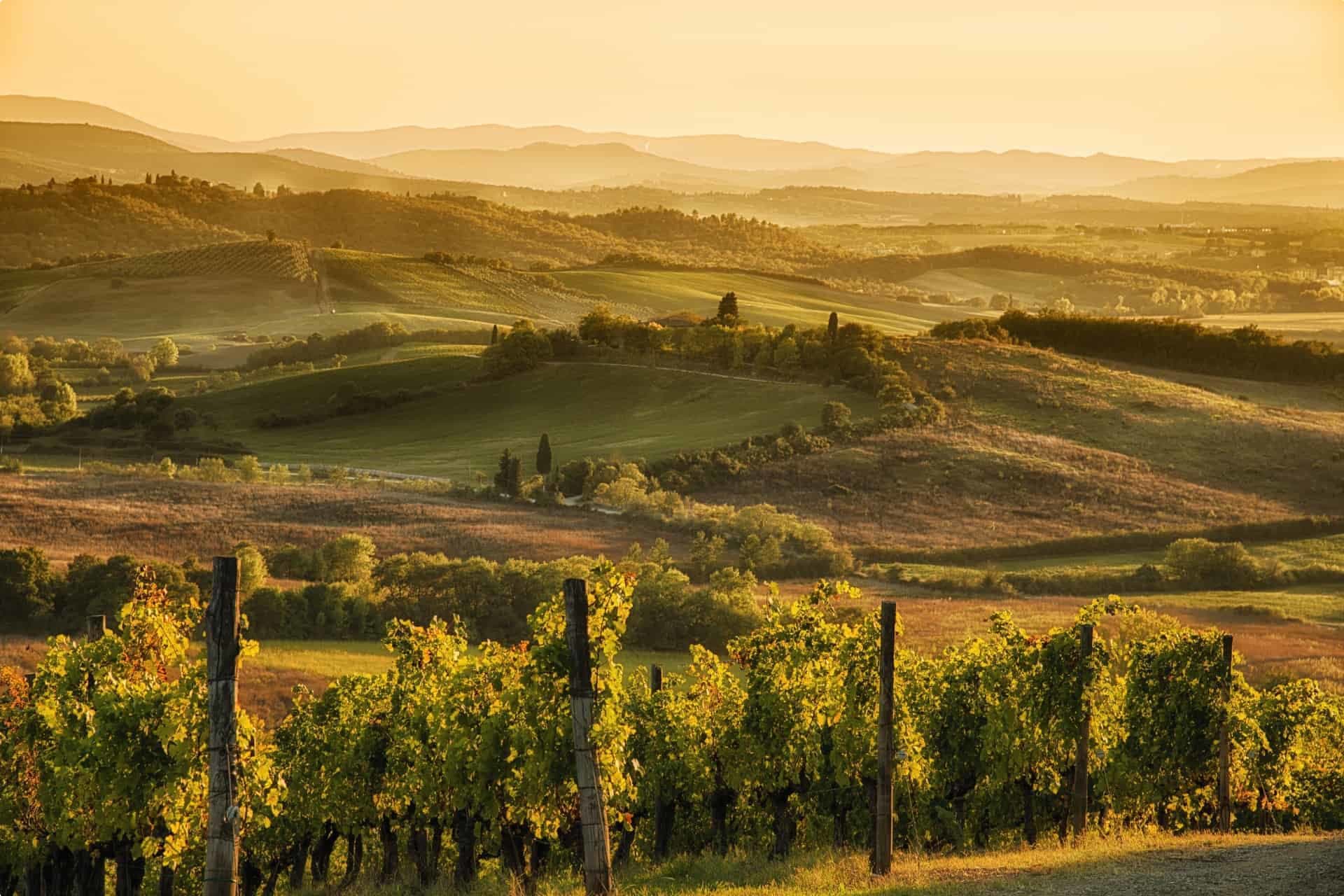
While travelling in Tuscany, learn about wine at the Museo del Vino. The variety grown in and around San Gimignano is distinctive. Made from the Vernaccia grape, this white wine is described as having a crisp acidity, followed by a bitter finish. Why not take the opportunity to taste for yourself?
Notably, Tuscany is also known for Chianti wine, produced in the Chianti Valley between the provinces of Florence and Siena.
Montelupo
A surprising Ceramics Museum is nestled here in Tuscany’s hills. Over 1000 pieces are on display, with another 5000 housed in storage for safe-keeping. They date from the end of the 1200s to the 1700s, with almost all of those on display obtained from archaeological digs around the historic centre of Montelupo. It is understood that most were collected from furnaces – ancient waste dumps where defective pieces were disposed of. These now form the core of the Museum’s Renaissance collection. Glazed ceramics from the display give an indication of the various decorative styles throughout the eras. Accordingly, this is not to be missed among Florence attractions!
Prato
This second-largest city in the region is known for its textiles. The Museo del Tessuto is an impressive textile museum that is well worth a visit to learn about how the district’s economy has developed. But Prato is also famed for its place within the slow-food movement. So, why not sample the local delicacies, including at the famous Biscottificio Mattei Vinci?
Siena
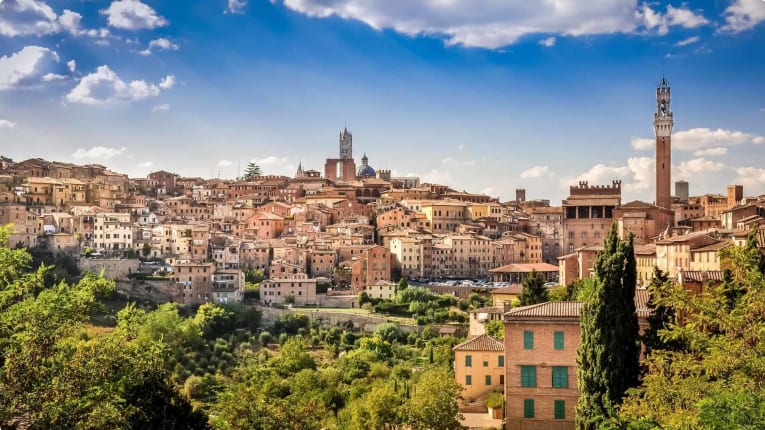
Picture-perfect Siena is known for its soaring medieval architecture and fan-shaped central square. This square is called the Piazzo del Campo, and is the site of the Palio di Siena: a horse race that runs twice per year. Additionally, artisanal boutiques and restaurants can be discovered in Siena’s vibrant streets.
Vinci
The beautiful hill town of Vinci is famously the birthplace of Renaissance polymath Leonardo. Check out the Museo Leonardino, where you will learn about Leonardo’s scientific studies and view his impressive models. Plus, it is also possible to visit Casa Natale di Leonardo – Leonardo’s birthplace.
For more points of interest in Florence, follow this link to the local tourism site.
Odyssey Traveller’s tours of Florence
Odyssey Traveller offers a 21 day tour of Florence for senior travellers. This small group tour of Florence examines the heritage, culture, and history of this beautiful city. From our base in self-contained studio apartments in the city’s centre, we explore a different part of Florence each day. We venture into medieval basilicas and churches, and view archaeological ruins. Additionally, we view some of the most impressive artworks in the world, contained within Florence’s many galleries. During the tour we also take day trips to Florence’s diverse surrounds, visiting vineyards and museums in order to gain a greater appreciation for this beautiful region of Tuscany. Our program leader and local guides are passionate about these places and are delighted to share their enthusiasm with you. For more information on our Florence: Living in a Renaissance City tour, follow the link.
We also offer tours of Italy and Europe that include stops in Florence. For a full list of our tours to Italy, click here.
If you are interested in travelling to Italy, we recommend you start researching and exploring! You might like to check out our recommended reading list for travelling to Italy.
Odyssey Traveller designs tour packages for active, senior travellers. We provide authentic experiences, with a focus on education. We aim to turn tourists into travellers. If you would like to contact us about this, or any other of our small group tours, please call or send an email. We’d love to hear from you!
Updated January 6, 2020.
Originally published on November 27, 2017.
Articles about Italy published by Odyssey Traveller
- The Sicilians and their Kings
- Empires Crossing the Mediterranean: 1130-1300
- Secrets of Venice: A History of Espionage
- Secrets of Florence: The Definitive Guide for Travellers
- The Roman Empire
- Who were the Roman Emperors? The Definitive Guide for Travellers
- Key Figures of Renaissance Florence
- Italian Renaissance Families: The Medicis
- About Malta, Sicily, Sardinia and Corsica: islands of the western Mediterranean
- Trip advice for travellers going to Italy
- as well as more articles on Italy here
For all the articles Odyssey Traveller has published for mature aged and senior travellers, click through on this link.
External articles to assist you on your visit to Florence and Italy
Related Tours
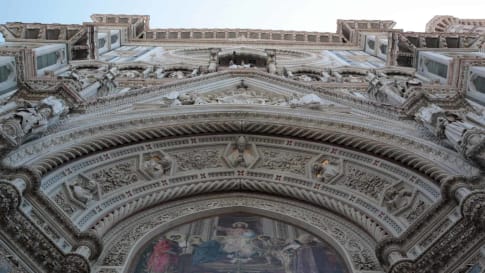
22 days
Mar, Apr, Sep, Oct, MayFlorence: Living in a Renaissance City
Visiting Italy
A small group tour with like minded people, couples or solo travellers, that is based in Florence. An authentic experience of living in this Renaissance city The daily itineraries draw on local guides to share their knowledge on this unique European tour. Trips to Pisa, Lucca and Perugia are included.
From A$12,450 AUD
View Tour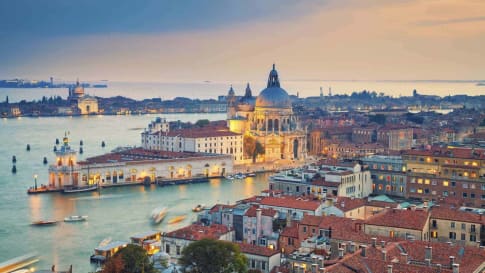
18 days
Aug, SepArt and History of Italy | Small Group Tour for seniors
Visiting Italy
Taken as a whole, Italian Civilization (which includes, of course, the splendid inheritance of Ancient Rome) is absolutely foundational to Western culture. Music, Painting, Sculpture, Architecture, Literature, Philosophy, Law and Politics all derive from Italy or were adapted and transformed through the medium of Italy.
From A$15,175 AUD
View Tour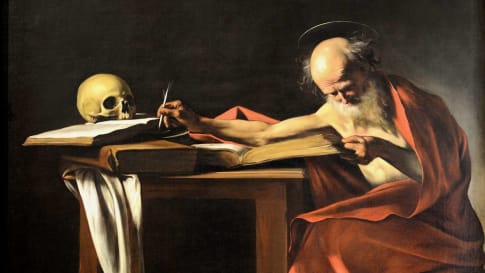
20 days
May, OctCaravaggio’s Journey | Small Group Tour in Italy
Visiting Italy, Malta
On this small group tour of Italy and Malta for mature and senior couples and solo travellers we trace the life of Caravaggio, exploring the artistic works he left behind and the tumultuous life he led. We follow him from his birthplace in Milan to Rome, Malta, Sicily and Naples. In each place he lived Caravaggio left behind a rich legacy of art for us to admire.
From A$13,750 AUD
View Tour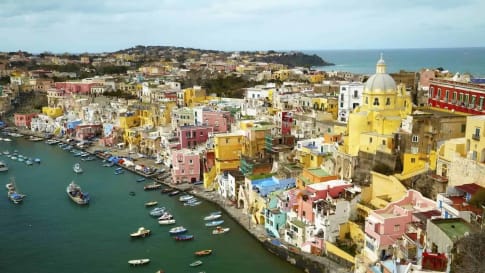
22 days
Sep, Jan, AprAncient History of Southern Italy & Sicily group tours
Visiting Italy
Our program for senior travellers, as well as featuring the rugged countryside of Southern Italy, also encompasses learning about the many civilisations that have shaped this land. We learn about the influence of the early Phoenicians, Greeks, Romans, Byzantines, Saracens, and Aragonese.
From A$16,995 AUD
View Tour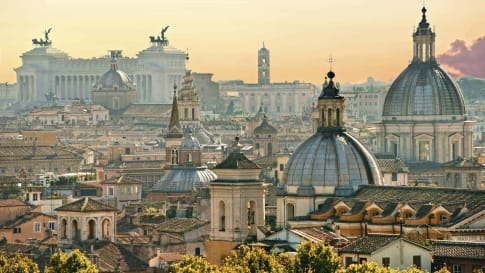
15 days
DecDiscover Rome | Cultural and History Small Group Tour for Seniors
Visiting Italy
Rome is arguably the most fascinating city in Italy, the capital city, once the centre of a vast, ancient empire and still today a cultural focus within Europe. Explore the city in-depth as part of a small group program spending 14 days exploring, just Rome and Roman History.
From A$8,795 AUD
View Tour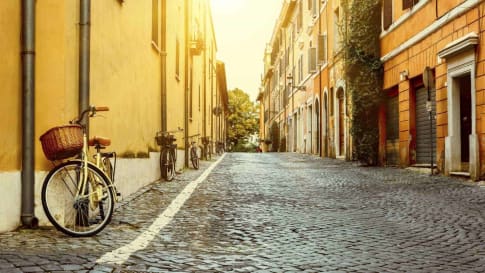
22 days
Sep, Apr, MarHeritage, Culture and History of Italy | Small Group Tours for Seniors
Visiting Italy
Rome, the world’s first superpower, lasted for almost a thousand years. In this small group tour for senior couples and solo travellers we thread our way through the Rome of the Emperors, then through the Italy of the Renaissance, Michelangelo, the Medici, and the Borgia. In the south, we visit the cosmopolitan city of Naples as well as Pompeii and the island retreat of Capri.
From A$12,450 AUD
View Tour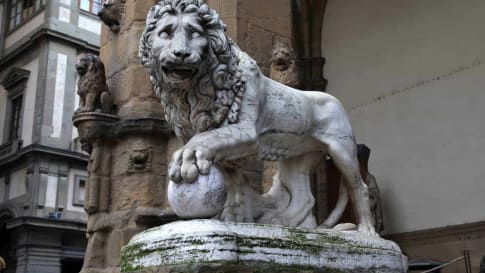
21 days
May, AugRenaissance Italy Tour: Story of Five Families
Visiting Italy
Explore Renaissance Italy on this small group tour though an examination of five significant city states. Florence, Urbino, Ferrara, Mantua and Milan were all dominated by families determined to increase the status of their city through art and architecture. Spend time coming to know the men and women who helped create the cities, as well as the magnificent legacy they left behind.
From A$12,995 AUD
View Tour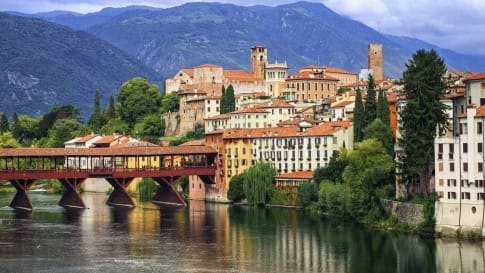
22 days
Sep, MayTour of Northern Italy's Lake and Alps
Visiting Italy
A European tour to the stunning Lakes Region of Italy. Your travel experience begins in Milan, daily itineraries include two of the region’s lakes - Garda and Maggiore, plus the Roman villa Desenzona and a day in Cinque Terre. Local guides share experience and knowledge with you on this escorted small group tour for couples and solo travelers.
From A$14,185 AUD
View Tour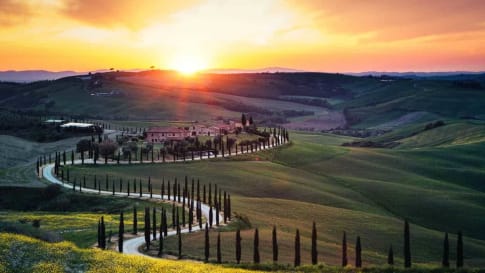
18 days
SepVia di Francesco Walking Tour | Small Group Walking Tours Italy
Visiting Italy
Experience with like minded people a small group journey walking Via di Francesco (or the Way of St. Francis) in Italy. One of a few European tour companies who offer a tour leader and local guides for senior couples and single travellers on this journey between the key destinations on this walk.
From A$11,050 AUD
View Tour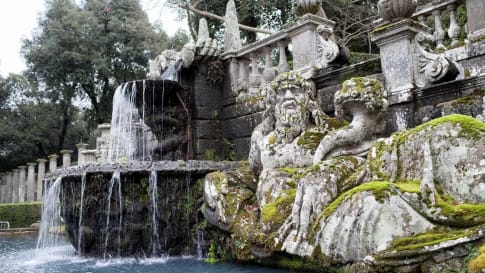
18 days
Apr, Oct, SepVia Francigena Walking Tour: Great St. Bernard Pass to Rome
Visiting Italy, Switzerland
An escorted tour that walks sections of the ancient pilgrimage route Via Francigena. Our small group is joined by Local guides to share knowledge and authentic experiences as our group of like minded people make their way to Rome.
From A$12,250 AUD
View Tour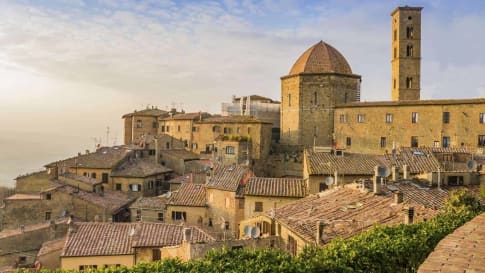
26 days
AugVillages of Italy | small group tours Italy
Visiting Italy
Explore Italy in a small group tour. Italy is the most Mediterranean of nations and as mature and aged as many of its red wines. In terms of being a nation, it is even younger than New Zealand. This is often hard to believe, bearing in mind that Italy gave rise to Europe’s first global empire, which endured for approximately 2,000 years, the Romans. The new constantly brushes with the old and in doing so generates sparks that makes any sojourn in Italy a deeply textured experience.
From A$15,250 AUD
View TourFAQs; commonly asked questions about the history of Florence
What is Florence Italy best known for?
The city of Florence is best known for being the birthplace of the Renaissance, an artistic and intellectual movement credited as ‘rebirthing’ the classical tradition and paving the way for the modern world. For more information, we encourage you to read the rest of this article above about Renaissance art.
What was Florence famous for during the Renaissance?
Florence’s ruling family, the Medici, used their wealth to back the revolutionary new art forms. As a result, many of the Renaissance’s greatest thinkers and artists lived and worked in Florence – Sandro Botticelli, Leonardo da Vinci, Michelangelo and Niccolo Machiavelli, and many of their great works are found in Florence today.
Is Florence older than Rome?
No. Legend holds that Romulus and Remus founded Rome in 753BC, but the actual first inhabitants probably came earlier, indicated by the fact that the founding of the Roman Republic happened in 509BC. By contrast, Florence was founded almost 500 years later by Julius Caesar in 59BC, though the region had been home to Etruscans long before that.
What was the first city in Italy?
Neither Florence nor Rome takes the title of Italy’s oldest city, which goes to the city of Matera. Located in southern Italy, Matera has reportedly been inhabited for over 9000 years.
What is the geography of Florence?
Florence is situated on a low basin surrounded by six hills. The river Arno flows through the heart of the city and is traversed by many charming old bridges.
Why do we call Firenze Florence?
Both the Italian name – Firenze – and the English version – Florence – come from the Latin Florentia which was the name given to the city during Roman rule. As Europe’s languages evolved from Latin, the English and Italian versions of place names diverged from one another, following the course of many words derived from Latin.
How did Florence Italy get its name?
The origins of the name Florentia remain conjecture. Linguists have suggested that it might derive from the Latin word for river, fluvius. Others have suggested that it comes from the Latin word for blooming, florere.
Who lived in Florence?
The city of Florence has been home to many famous people throughout history. In addition to the Renaissance artists and intellectuals listed above, prominent Florentines from the Middle Ages include the writers Dante Alighieri, Petrarch, and Giovanni Boccaccio. Since the Renaissance, the city has since been home to the scientist Galileo, the fashion designers Roberto Cavelli and Salvatore Ferrogamo, and the film director Franco Zeffirelli
What was the first capital of Italy and why?
When modern Italy was first formed in 1861, Turin was the first capital. This reflected that the first attempts to unify Italy were begun by Italian nationalists loyal to the House of Savoy, which was located in Turin. Following the incorporation of Tuscany, Florence became the capital, in recognition of its central role in the Renaissance. When Rome was taken by the nascent Kingdom, it was declared the capital, restoring it to its old position as capital of the Roman Empire.
Why was Florence at the heart of the Italian renaissance?
Why was Florence at the heart of the Italian renaissance?
Florence, had money, through the Banks and commerce as well political power against the Church of Rome. This enabled the nobility to embrace artists and philosophers, both men and women to think and explore. Creating a place to think freely, from this came some of the greatest art and inventions of the period.
The desire to think, came from the money earned by processing Wool from the sheep of Britain and Northern Italy. The will was scoured and dyed. The Florentines produced the most sought after cloth in Europe, a premium price was achieved! The Florentines could then allow the artists to think and work, creating the Renaissance period.
Articles
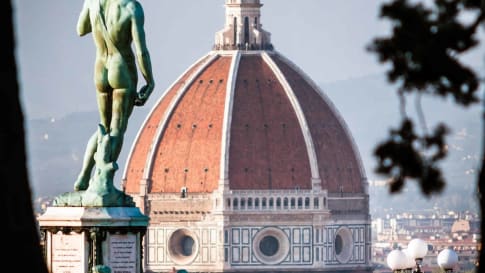
Brunelleschi's Dome: The Amateur turned Renaissance Genius
Filippo Brunelleschi. We will look at who he was and how he came to win the competition to design the dome for Florence's cathedral.

Five Women of the Renaissance period to see on tour
Five Incredible Women of the Renaissance | Small Group Tours The Renaissance is considered humanity’s greatest intellectual and artistic revolution and stories about the period is dominated by tales of famous men and their inventions,…

Italian Renaissance Families: The Medicis
This blog is part of a series on five influential Italian Renaissance families that shaped Italy, especially during the fifteenth and sixteenth centuries. It is based on both our Italian Renaissance Summer School course, and…

Key Figures of Renaissance Florence
Five Key Figures of Renaissance Florence | Small Group Tours Regarded as the ‘birthplace of the Renaissance’, Florence from 1400 to 1600 was in a religious, cultural and political ferment that was crucial to shaping…
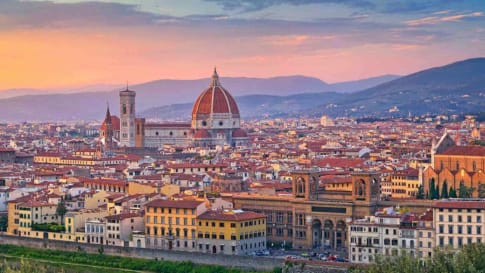
Secrets of Florence: The Definitive Guide for Travellers
Secrets of Florence: Ten Hidden Gems to Visit Florence, the capital of the Italian region of Tuscany, is considered to be the birthplace of the Renaissance. Today the small city leaves behind a powerful legacy…
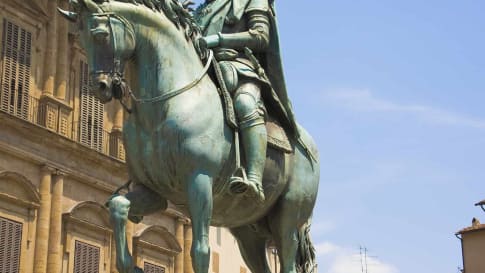
The Rise of the House of Medici
The House of Medici was an Italian banking family and political dynasty that de facto ruled the city of Florence during much of the Italian Renaissance.


